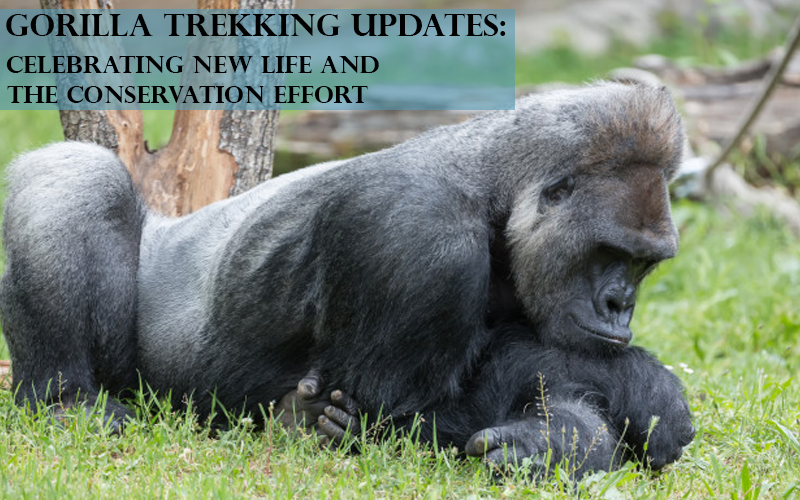The severity of the COVID-19 pandemic reverberated around the world through travel bans that brought any and all plans to a halt. In the midst of this fearful global pause came news of hope and new life from Bwindi Impenetrable Forest.
Two baby mountain gorillas were welcomed into the world. The first was born on April 25th to the Nshongi Gorilla Family from Rushanga, in the southern sector of Bwindi. The second was born on May 1st to the Muyambi Gorilla Family from Buhoma, in the northern sector of Bwindi. Buhoma was also the first sector to open up the first habituated gorilla family, Mubare, for gorilla trekking in 1993.
Both babies are reported to be healthy but their mothers have kept the rangers at bay, making it difficult to determine their sex. Although mountain gorillas grow to become formidable, they are fragile as newborns. The baby clings to its mother for warmth, nurturing and safety and the mother, in turn, is extremely protective of the baby.
mountain gorillas begin to conceive around the age of 10. Like humans, they have a nine-month gestation period and are able to carry one to two babies at a time. They can bear between four to six offspring over the course of their lifetime and the newborn mountain gorilla, on average, weighs four pounds.
Gorilla Trekking and Conservation
Gorilla trekking has aided in the conservation of mountain gorillas as a fund-raising tool and as a way of drawing attention to their irreplaceable value and the need to protect them. The progress made is evidenced in the birth of these newborns and in their overall growing numbers. It is also marked by the 2018 reclassification by the International Union for the Conservation of Nature (IUCN) that moved them from “Critically Endangered” to “Endangered”.
These conservation efforts are especially relevant in Uganda where over 50% of the world’s population of mountain gorillas resides.
Gorilla Trekking Currently
With the ongoing pandemic, tourist activity has been put on hold for the protection of humans and mountain gorillas alike. Because their DNA is so alike to that of humans, they are just as vulnerable to the COVID-19 virus. Continuing gorilla trekking without effective measures in place would undermine the progress made so far in conservation.
When tourist activity does resume under the proper precautions, you will find that gorilla trekking remains one of the most thrilling adventures nature has to offer. If lucky, you will also find two new members of the gorilla families thriving in the evergreen growth of Bwindi Impenetrable Forest.









